Nepal was a breath
of fresh air. Or rather I should say everything from the 36th hour
after we entered Nepal was a breath of fresh air. The first 36 hours were spent
on a coach, first driving from Delhi to the Nepal border at Banbasa and then
along the painfully bad roads of this beautiful country until we finally
reached Kathmandu some 36 hours later. You may remember in my last post that I
mentioned the bus didn’t have a toilet? Well for future reference, spending
that long on a bus without any basic facilities and only ‘pee in the roadside
bushes’ stops while nursing fairly serious stomach bugs is not a good idea.
Leaving India was
as arduous as expected, long stops with a wait for no good reason to cross the
border, the most westerly one as it happened and not the border we had
expected. It was also not the border that a couple of French guys on the bus
had expected either as they had planned to meet their friend, who also happened
to have their passports, at Sonauli, resulting in them being unceremoniously
dumped at the roadside not long after we left with a finger pointed in the
rough direction they should head. For all I know they’re still wandering around
that area of India now.
Getting stamped out
of India involved a long-winded process with all the usual forms, all written
out painstakingly by hand in large books. Once this step was complete, we were
directed to walk 100m along the road to another checkpoint where they went
through all of our paperwork before completing their own entry in another huge book.
Then, in case the first two had made any errors – I mean, this stuff has to be
watertight, right? – a third desk another 100m along the road did the same
thing all over again. Eventually, with some relief, we were out and after
overpaying $5 to Nepalese immigration for a 15 days visa (too tired to fight at
this point) we legally entered Nepal. As the only two foreigners on the bus, we
were the only ones who had to go through this process. Indians and Nepali’s are
not required to complete formal immigration, so they passed their time having
their bags checked and checked again. In total we counted at least six separate
checks, several were thorough empty-your-bag-out type inspections. There was no
way any contraband was getting through. Except of course if you were a
foreigner, because as we were so busy dealing with paperwork, we actually
bypassed every single check. No one looked at our bags even once, so it really
begs the question – what exactly is the point of it at all?
Upon arrival in
Kathmandu we checked in to a nice little hostel called Travellers Hub, run by a
very friendly local couple. We didn’t really have a sense of how long we’d stay
in Kathmandu at this point, but it seems we picked the perfect location.
Despite reading some not so favourable accounts of the city, Kathmandu was a
great place. Certainly, it had a bustle to it, but it had everything India
lacked. Locals were friendly and chatted with us without any hidden agenda.
They smiled warmly. They didn’t push us out of the way. They ate with cutlery.
They did not lean continuously on their car horns. They did not defecate in the
streets. They did not drop litter. They did not stare. They did not hassle us
incessantly to buy their wares. Need I go on?
 |
| Would not want to be an electrical or telecom engineer in Kathmandu! |
 |
| Momo's! |
 |
| Soooo much unnecessary packaging! |
 |
| A world record attempt at the most people, around 70,000 apparently, saying 'Buddha was born in Nepal' at the same time... |
Kathmandu is a
beautiful city, sadly devastated by the earthquake that hit in 2015 and the
damage is still evident everywhere you look. In the main Durbar Square many of
the temples and buildings still lie in ruin. Those that still stand are heavily
shored up with scaffolding and large cracks can be seen everywhere. Walking
past one tower, it was sobering to think that its collapse alone was
responsible for the deaths of over 180 people. In total 9,000 Nepalese people
lost their lives during the earthquake and a further 22,000 were injured and
rebuilding the city is a work in progress, no more so than when it comes to the
roads. Roads in Nepal are some of the worst I’ve seen anywhere in the world,
yet I still couldn’t help but wish we were there on bikes.
We wandered the
streets, debated buying lots of craft and clothing items we just didn’t need
because the prices were so ridiculously low, then reconsidered when we found
out the cost of shipping. We ate momos at a little café across the road from
our hostel and when we got tired of momos we ventured into the tourist
restaurants with varying degrees of success. One place had reasonable fish and
steak, but the 25% added to the bill in taxes and service charges was hard to
swallow. Most other tourist restaurants were mediocre at best and we found
ourselves returning to our café time and time again for dinner for about a
dollar.
 |
| 180 people were killed when this tower collapsed. |
It just so happened
that we had arrived almost on the eve of Holi, the famous Hindu festival of
colours. I had been a little disappointed that we would miss experiencing it in
India so I was pleased to find out that it is also celebrated in Nepal. In addition,
whereas many celebrations in India have become very commercial and
unnecessarily boisterous, in Nepal it seems that more of the meaning of the
festival has been retained. Willing to sacrifice my old riding jeans, I bought
a cheap white t-shirt and we braced ourselves for battle.
On the morning of
Holi, Evan was feeling quite rough so, sad to be going out without him, but reluctant
to miss the festivities entirely, I set out alone to begin with. The streets
held a sense of anticipation and I peered around each corner cautiously,
waiting for the barrage of water and paint, but early on the celebrations were
quite sedate. Wandering the streets close to where we were staying most of the
people I met were families with small children who squealed in delight at the opportunity
to ‘paint’ a foreigner. They were gentle, smearing a little powder on my face
while shrieking ‘Happy Holi!’ at the tops of their voices. They were just as
excited to be painted back. Groups of teenagers also prowled the streets with
their super-soakers and bags of paint and several times I got jumped on by half
a dozen grinning kids armed with copious amounts of multi-coloured powder.
Getting closer to
Durbar Square the crowds swelled and soon there were thousands of people
dancing, throwing paint and generally having a whale of a time. The police and
military presence was high, guarding the remains of the temples and stupas, but
they watched from afar, happily posing for photos and accepting the odd smear
of paint on their faces too. What surprised me about the whole celebration was
how genuinely happy and respectful the atmosphere was. There was no drunken
rowdiness, no terrorizing of people who did not wish to take part but needed to
move through the area, a rarity in today’s world where so many people take
things too far and spoil it for everyone.
Later in the day
Evan felt a little better and ventured out with me. It didn’t take him long to
be sporting shades of purple and green. Around the square things got a bit
rougher as people pushed and shoved to try and get into and out of the area so
we decided at that point that we should probably retreat to the safety of the
lanes around our hostel where things were somewhat calmer. Having later heard
stories from people who attended Holi in Pushkar of people having their clothes
ripped off and paint thrown in their eyes that a week later still wouldn’t wash
off, I’m glad we had the chance to experience Holi where we did.
It had now been
several weeks since Evan’s sight issues had first appeared and as we were in a
new place it seemed like a good idea to seek another medical opinion. Presuming
that Nepal’s medical system would be similar to India’s, we did a google search
for neurologists and came up with the Annapurna Neurological Insitutute,
conveniently located only 4km away. Here we got an appointment as quickly as we
had expected and after a consultation with a neurologist there, Evan
reluctantly agreed to be admitted for a series of tests.
Later that afternoon,
we returned to the hospital where Evan was shown to a bed on a four bed ward.
Unlike western hospitals, the beds there have no privacy whatsoever. No
curtain, no screens and whatever the doctor has to say is also shared with
whoever else happens to be on the ward at the time. Other patients’ relatives
would actually come and stand and read your notes over the doctors shoulder
when he did his rounds!
Next to each bed is a bench bed to allow relatives to
stay, and although I considered this, we decided it would be best for me to
return to our room in the city each night. This would allow me to have a shower
and get some proper rest and most importantly bring in some decent coffee and
breakfast each morning, something unavailable near to the hospital. The price
for the bed each night did not include any food and so for the next few days I
spent my time trawling the dingy and beyond-grubby eateries in the vicinity of
the hospital to look for something edible.
The system in
Nepalese hospitals is a little different to home. Twice a day doctors do their
rounds, usually accompanied by a gaggle of international exchange students.
They make quips, discuss their theories on what might be wrong with you and
then add their fee to your bill. When treatment is prescribed the nurse will
fill out a list of medical supplies and drugs required on a little pink docket
that has to be taken to the pharmacy downstairs to be filled and paid for. The
items are then brought back upstairs in a little plastic basket to be given to
the ward sister to administer. Each day further costs are added to the bill for
tests, consultations and pretty much anything else they can come up with.
Before agreeing to
being admitted, we asked how much the entire bill was likely to be and we were
given an estimate. You can appreciate then when exactly 24 hours after Evan was
admitted he received a phone call summoning me to the payment desk downstairs
where I was told the running total already stood at twice the estimate and
there were still at least two more days to go. As much as I tried to keep my
cool and maintain a level of politeness it was at this point that I cracked and
for the rest of our time spent in the hospital there was a decided coolness
towards me from reception staff. In what was otherwise a friendly, professional
place, we were clearly taken advantage of. The only redeeming factor about this
was that we discovered later the hospital works on the basis that those who can
afford to pay dearly and that this money is used to offer free or subsidised
care for those who cannot afford to pay. Still, it left a bitter taste.
Getting to and from
the hospital each day was an adventure in itself. The first time we attempted
to hail a cab the driver consciously looked us up and down before replying
‘1000 rupees’. Laughing, we walked away. The next taxi asked 500 rupees and we
accepted. Later on I discovered that somewhere around 300 rupees ($3) was the
meter price, although the chances of scoring this as a tourist was near
impossible. In the morning I would get up early, collect breakfast and coffee
from a nice little shop across the road and walk a little way away from the
tourist area in search of an old, tatty cab as these always provided the
fairest prices. The first morning I did this I found a taxi driven by an
elderly gentleman wearing a woolly hat and a big scarf pulled up over his face
as though it was the middle of winter rather than almost 30 degrees. He agreed
to take me to the hospital for 500 rupees. The following morning I bumped into
him again and he immediately threw open his car door for me exclaiming ‘To the
hospital, my friend!’ Upon arrival I handed him 500 rupees and he scrabbled
about in his glove compartment before handing me back 100 rupees, saying ‘I
charge you too much, you have enough on your plate. Same time tomorrow?’
Along
the route to the hospital were a never ending stream of surprises. One day as
we passed Ratna Park there was a soldier completing a show jumping course on
not one, but two horses, cantering side by side with him stood up on their
backs, one foot on each horse. Another morning we drove through the middle of a
wheelchair half marathon. What was unusual here was that the traffic had not been
stopped and wove between the racers, many cars coming perilously close to the
competitors. Some racers took advantage of passing motorcycles who slowed to
allow the wheelchair users to grab hold of their pillion rail before speeding
up to pull them along.
In the evening,
leaving the hospital at almost 10pm most nights it was harder to find a taxi. A
couple of nights I walked back to town. It was about 4km back to the room we
were renting and it was nice to walk after sitting mostly cross legged on a bed
all day. One night I hailed a taxi outside who already had a fare and ended up
going on a very long ride around town as he dropped off his existing customers
first. He explained that he didn’t usually pick up additional passengers but he
was concerned that I wouldn’t find another taxi at that time of night in that
area. The last night I left the hospital I was surprised to step outside into what
could only be described as the set of the Walking Dead. The entire place was
empty, not a car on the road, not a soul in sight. As I walked towards the
causeway in the direction of the city in the pitch dark I came upon a number of
security personnel, both policemen and soldiers, some of whom shouted to me in
Nepalese. Obviously I couldn’t understand them, and when I got closer I was a
little disturbed to find they were heavily armed. As they saw I was just a
random tourist they looked apologetically at me and either smiled or looked
bemused as to why I would be wandering alone in that area late at night. It
wasn’t until the following day that I discovered it was all because the Prime
Minister of Pakistan was on a state visit and the roads had been closed as a
security measure.
Finally, after what
seemed like weeks but in fact was only a few days, Evan got discharged. This in
itself took most of the day with various processes that had to be completed.
One of which was to pay off the rest of the bill of course. In order to do this
I had to go through a daily ritual of visiting various different cash machines
to find ones that would allow me to take out money. With discharge finally
complete, we escaped into the outside world again with a huge sense of relief.
By this point though, we were both feeling pretty rough. We both had a stomach
bug and I had added a cold, complete with runny nose and sore throat that I
presume I picked up at the hospital. Still, tired of being stuck in one place
we decided to make the most of the last few days on our visas and the booked a
bus to Pokhara for the next day.
Pokhara is about 5
or 6 hours drive west of Kathmandu, or 9 hours if you use tourist bus services.
The roads were as awful as they were on our arrival and with countless stops
for way too long at expensive tourist food establishments along the way, we
were tired and very much ready for a walk when we finally arrived in Pokhara
late in the afternoon. The guesthouse we had booked was only a couple of
kilometres away so we turned down the rip-off taxi drivers and headed into
town.
Pokhara is a far
more touristy town than Kathmandu, being the gateway to the Annapurna mountain
range where many multi-day treks begin. Everyone we had spoken to previously
about it immediately glazed over at our mention of the place as they gushed
about how beautiful it was there, how stunning the views were of the mountains.
They weren’t wrong, it was indeed a scenic place, set on a lake that honestly,
I’d challenge Aldous Huxley’s claim and say is more beautiful than Lake
Atitlan. We wandered around the shops, noting the far higher levels of cheap, imported
Chinese tourist tat for which shopkeepers were demanding much higher prices
than in Kathmandu. Food was also pretty awful. One night we went to a nice
looking restaurant and chose beef lasagne with garlic toast. What was served
was lukewarm lasagne with mystery meat accompanied with four small triangles of
stale bread. I have no idea why we didn’t send it back, but we should have
done.
Our reason for
coming to Pokhara was singular. We wanted to go paragliding. I can’t say I’ve
ever really thought about doing it before, but of all the places in the world
to do it, surely over the Himalayas is the ultimate location. I’d read up about
various companies offering tandem flights, of which there are dozens, before settling
on the original one, Sunrise Paragliding. Not only were their reviews very
good, but their pricing was clearly set out on their website and a quick email
exchange with the owner the previous day had secured us places for the
following day for a late morning flight when the thermals are at their best. We
opted for the longer ‘cross country’ flight, meaning that you are likely to be
in the air for around an hour rather than the usual 15-30 minutes and you land
a short distance away by the lake, but in reality we didn’t really travel very
far and it seemed everyone landed in the same place. However, we were indeed in
the air for around an hour so I have no complaints.
Unfortunately, on
the day of our flight the mountains were covered with a thick band of low
cloud, but this didn’t really take away from the experience. After a remarkably
efficient launch, which basically involved running off a cliff edge strapped to
someone who knew how to fly these things, we found ourselves soaring on
thermals, reaching heights of nearly 3,000 feet and looking down on eagles
hovering below us. The views were truly breath-taking and it was surprisingly
calm and quiet up there. We had both taken gravol earlier that morning and I’m
glad I did. I don’t often get motion sickness, but the spiralling ascents soon
took their toll on me. If I thought I had it bad, then I should have spared a
thought for Evan. With a predisposition to travel sickness, coupled with having
just spent three days sitting in a hospital bed and still not being able to see
straight, he really struggled. He managed about ten minutes before he had to
close his eyes, but lasted the duration and later, his instructor, who did not
know his recent medical history was amazed and deemed him half superman, half
crazy for managing to participate at all. After what felt like an age, we both
touched down safely by the water’s edge, buzzing but also happy enough to have
our feet back on solid ground.
With only a day
left on our visas and a flight booked back to Jodhpur, the following day we
retraced our steps on a particularly tough bus ride back to Kathmandu. As we
boarded the bus the cloud cleared and treated us to a glimpse of the majestic
Himalayan Mountains. I was now well and truly in the throes of a nasty stomach
bug and even the smell of food made me gag. Evan didn’t feel much better. I
survived the journey with the help of some sips of water and a few ready salted
pringles and upon arrival back in Kathmandu we headed back to the familiarity
of Travellers Hub for one last night.
We had decided at
this point that the only logical thing to do was to return to India to deal
with the disposal of our bikes. We were sad at the realisation that this had to
happen, but as Evan’s sight had not improved at all, despite various
treatments, we had no choice. We debated whether we should just abandon them,
but I felt like the right thing to do was to go back, sell them and then
perhaps travel to the rest of the places we had earmarked in the north of India
by train. As we left Kathmandu I think it’s fair to say neither of us were
particularly excited at the thought of returning to India, but we did our best
to remain positive and to look for the opportunities in the new direction this
trip was to take.
After several ridiculous baggage checks, including one on the
actual steps leading to the plane at which we had to open our bags for
inspection for the umpteenth time, we were finally on our way. IndiGo, our
Indian budget airline didn’t disappoint, serving me an expensive can of coke
that was five months out of date. We were airborne though, had left Nepal
behind and in just a couple of hours we’d land again in Delhi, ready for the
next chapter of our adventure.































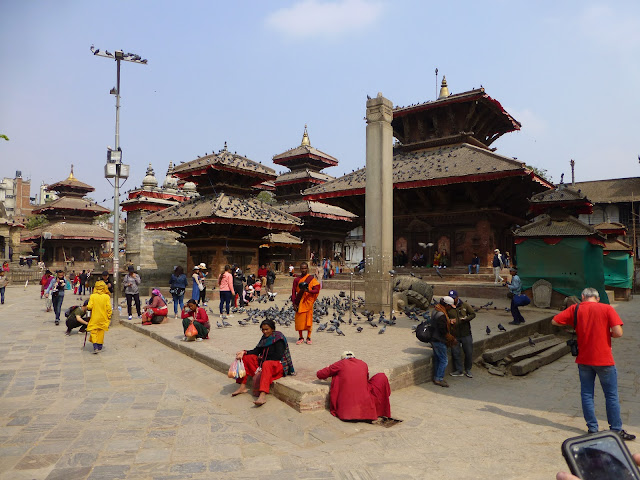































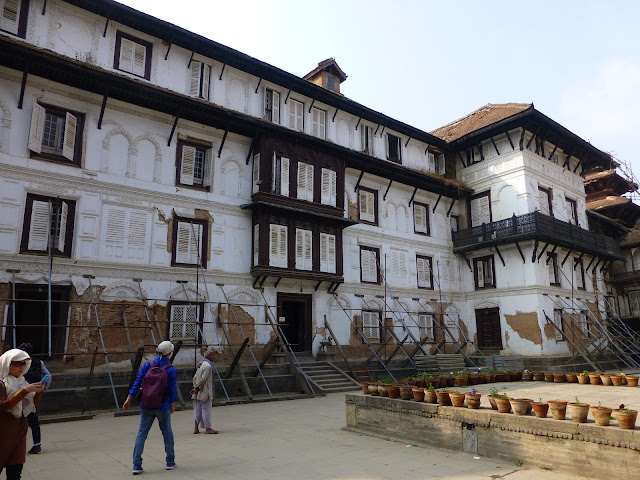






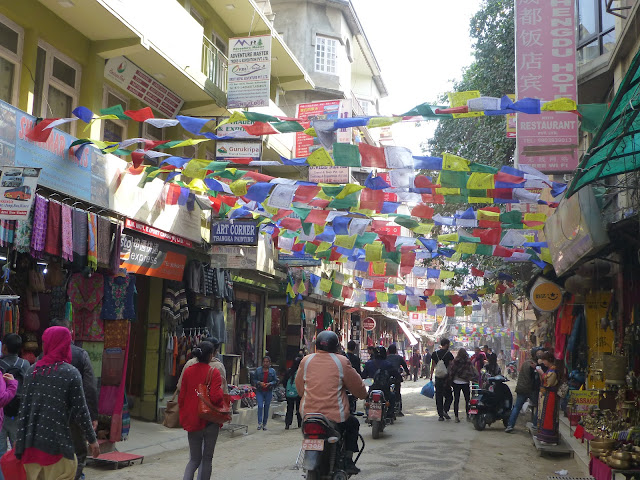


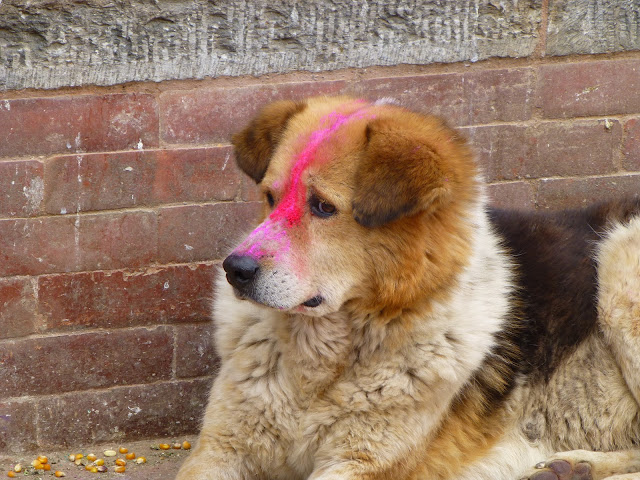















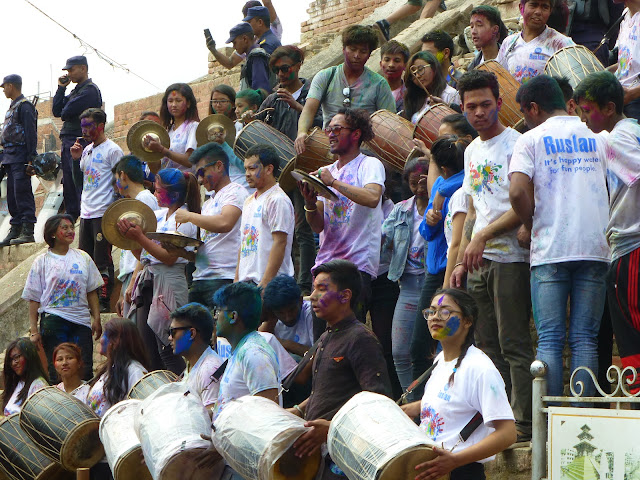






















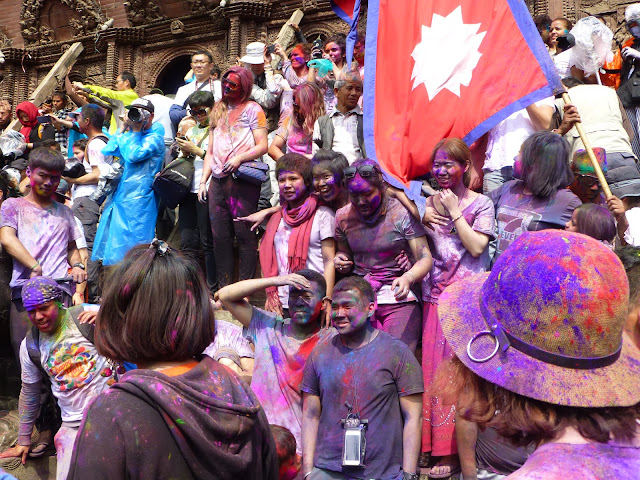


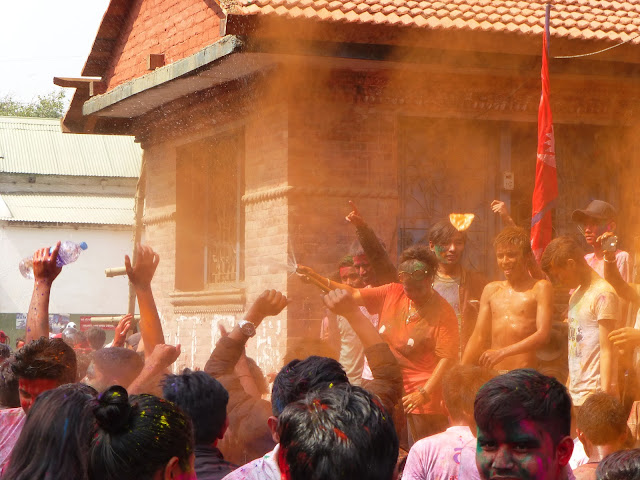



































































Wow Caroline. This has been more interesting for you. I have no head for heights so couldn't have managed the gliding but I do admire your bravery. Fingers crossed for Evan xx
ReplyDeleteI love following your trips through your photos and stories. Traveling always has it's ups and downs, it's good to hear about both. You both look great, even if you may not be feeling that way. I hope Evan's condition improves. A little worrying for you both.
ReplyDelete